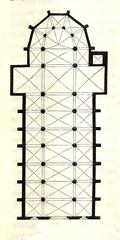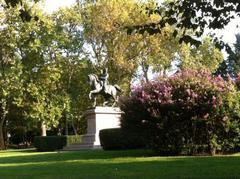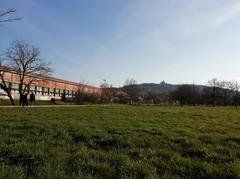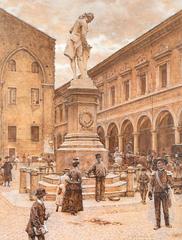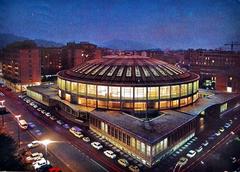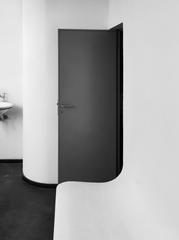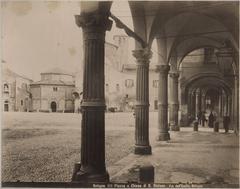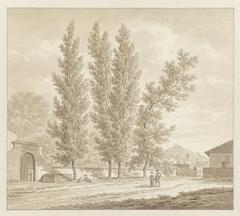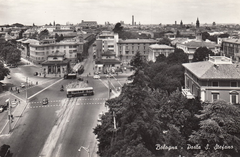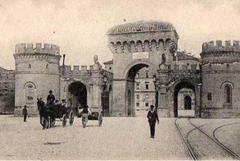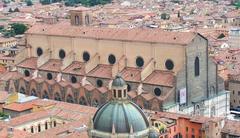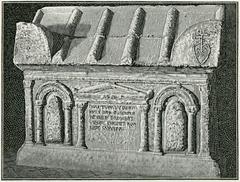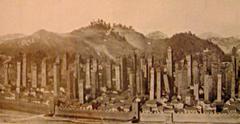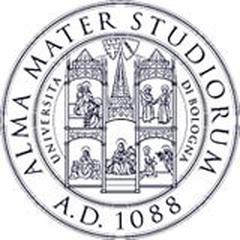Guide to Visiting Palazzo d’Accursio in Bologna, Italy
Date: 19/07/2024
Introduction
Palazzo d’Accursio, also known as Palazzo Comunale, is one of Bologna’s most iconic landmarks. Nestled in the bustling Piazza Maggiore, this historic palace has served multiple roles since its inception in the 13th century, including as the residence of the renowned jurist Accursius and the seat of Bologna’s municipal government. Its evolution over the centuries mirrors the dynamic political, social, and cultural landscape of Bologna. For visitors, Palazzo d’Accursio offers a unique journey through time, showcasing Renaissance art, medieval architecture, and modern restoration efforts. This guide aims to provide an in-depth exploration of Palazzo d’Accursio’s history, visitor information, and cultural contributions, ensuring a comprehensive and enriching visit to this historical gem (Bologna Welcome).
Table of Contents
- Introduction
- History of Palazzo d’Accursio
- Visitor Information
- Special Events and Guided Tours
- Notable Features and Artworks
- Cultural Significance
- Preservation Efforts
- FAQ
- Conclusion
History of Palazzo d’Accursio
Origins and Early History
Palazzo d’Accursio dates back to the 13th century when it served as the residence of the renowned jurist Accursius. Initially serving as the municipal government’s headquarters, it has become a symbol of Bologna’s civic pride and administrative authority.
Architectural Evolution
The architectural evolution of Palazzo d’Accursio mirrors Bologna’s changing political and social landscape. The building underwent significant expansions and modifications over the centuries, incorporating elements from various architectural styles. Notably, the Torre dell’Orologio (Clock Tower), added in the 15th century, symbolizes the city’s prosperity and technological advancement.
Renaissance Influence
During the Renaissance period, Palazzo d’Accursio saw further transformations. Renowned artists and architects, including Donato Bramante and Francesco Francia, contributed to its elegant facades and intricate interior decorations. The integration of Renaissance elements not only enhanced its aesthetic appeal but also reflected Bologna’s cultural and intellectual renaissance.
Role in Bologna’s Political History
Palazzo d’Accursio has been a pivotal player in Bologna’s political history. Serving as the city’s government seat, it witnessed numerous significant events. In the 16th century, it became the residence of the Papal Legate, highlighting Bologna’s status within the Papal States. The palazzo was the site of important political negotiations and decisions that shaped the city’s history.
Modern Era and Restoration
In the modern era, Palazzo d’Accursio continues to symbolize Bologna’s civic identity. Extensive restoration efforts in the 20th century aimed to preserve its historical and architectural integrity. Today, it houses the Municipal Art Collections, showcasing a rich array of artworks and historical artifacts that offer insights into Bologna’s cultural heritage.
Visitor Information
Visiting Hours and Tickets
Palazzo d’Accursio is open to visitors throughout the week. The visiting hours are as follows:
- Monday to Friday: 9:00 AM - 6:30 PM
- Saturday and Sunday: 10:00 AM - 6:30 PM
Tickets can be purchased at the entrance or online. Prices are as follows:
- Adults: €10
- Students and Seniors: €7
- Children under 12: Free
Travel Tips
Palazzo d’Accursio is centrally located in Piazza Maggiore, making it easily accessible by public transport. Visitors are encouraged to wear comfortable shoes as the tour involves walking through various sections of the building.
Nearby Attractions
While visiting Palazzo d’Accursio, don’t miss other nearby historical sites such as the Basilica di San Petronio, the Two Towers (Le Due Torri), and the Archiginnasio of Bologna.
Special Events and Guided Tours
Palazzo d’Accursio hosts a variety of special events throughout the year, including art exhibitions, cultural festivals, and historical reenactments. Guided tours are available daily and offer in-depth insights into the palazzo’s history and significance. Photography enthusiasts will find numerous picturesque spots within the building, making it a perfect location for capturing stunning images.
Notable Features and Artworks
Palazzo d’Accursio is renowned for its notable features and artworks. The Sala Rossa (Red Room) and Sala del Consiglio Comunale (Council Hall) are adorned with exquisite frescoes and paintings. The building also houses the Biblioteca Salaborsa, a public library that serves as a cultural hub for the city. The integration of historical and contemporary elements within the palazzo highlights its enduring significance as a center of civic and cultural life.
Cultural Significance
The cultural significance of Palazzo d’Accursio extends beyond its architectural and historical value. The building is a testament to Bologna’s rich cultural heritage and its role as a center of learning and innovation. The palazzo’s art collections and public spaces provide a platform for cultural exchange and community engagement, fostering a sense of shared identity and pride among the residents of Bologna.
Preservation Efforts
Preservation efforts have been crucial in maintaining the historical and architectural integrity of Palazzo d’Accursio. The building’s restoration projects have focused on preserving its original features while incorporating modern amenities to enhance the visitor experience. These efforts ensure that Palazzo d’Accursio remains a vibrant and accessible cultural landmark for future generations.
FAQ
What are the visiting hours for Palazzo d’Accursio?
- The visiting hours are Monday to Friday from 9:00 AM to 6:30 PM, and Saturday and Sunday from 10:00 AM to 6:30 PM.
How much do tickets to Palazzo d’Accursio cost?
- Ticket prices are €10 for adults, €7 for students and seniors, and free for children under 12.
Are guided tours available?
- Yes, guided tours are available daily and offer detailed insights into the palazzo’s history and features.
What are some nearby attractions?
- Nearby attractions include the Basilica di San Petronio, the Two Towers (Le Due Torri), and the Archiginnasio of Bologna.
Conclusion
Palazzo d’Accursio stands as a testament to Bologna’s rich history and cultural heritage. Its architectural evolution, political significance, and cultural contributions make it a must-visit destination for anyone interested in exploring the history and culture of Bologna. For more information on Palazzo d’Accursio, you can visit the official Bologna Welcome website. Stay updated on upcoming events and exhibitions by following us on social media or downloading our mobile app.
References
- Bologna Welcome. (n.d.). Exploring Palazzo d’Accursio
- Musei Bologna. (n.d.). Significance of Palazzo d’Accursio

